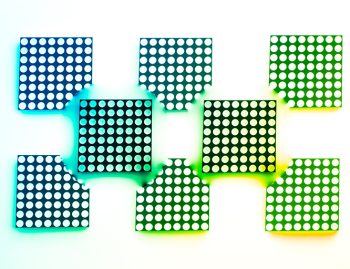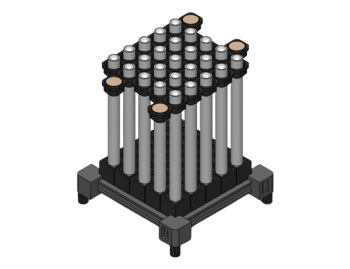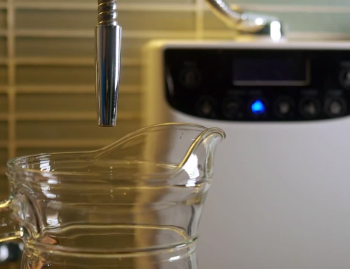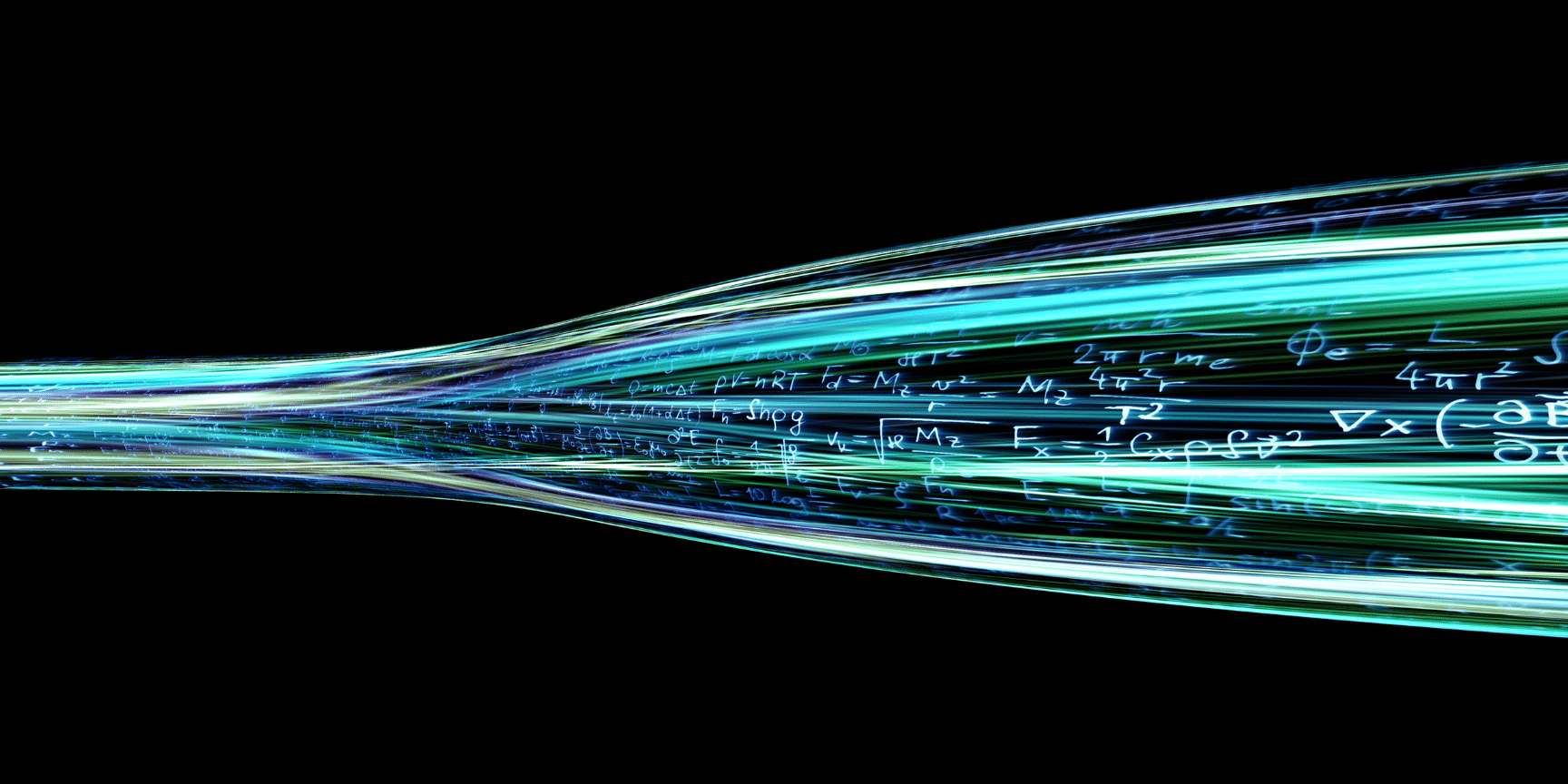
At first glance, a light pipe may seem like a simple device – it’s just a plastic rod, right? – but there’s a lot going on behind the scenes. Let’s take an in-depth look under the hood at three aspects of light pipe science: reflection, refraction, and diffusion.
The ABC’s of light pipe reflection and refraction
The transmission of light from the LED through the light pipe is governed by two phenomena familiar to high school physics students: refraction and reflection.
Refraction occurs when a light crosses the interface from one medium to another. As it crosses the interface from medium 1 to medium 2, the light deflects by an angle that depends on two things: the angle of incidence and the different index of refraction values.

Figure 1: Snell’s Law (Source: Wikipedia)
Figure 1 tells the tale. Light crosses from medium 1 (white) with refractive index n1, to medium 2 (blue) with refractive index n2. The incident light is at an angle at the angle θ1 to the normal. The light will be refracted to angle θ2 in medium 2, where the relationship between θ1 and θ2 is given by Snell’s Law:

If the refractive index n2 of medium 2 is greater than the refractive index n1 of medium 1, then θ2 < θ1 . In a light pipe, medium 1 in Figure X is air (refractive index 1) and medium 2 is the light pipe material with refractive index > 1. Once inside the light pipe material, the light continues in a straight line until it meets the outer boundary between the light pipe material and the air, shown in Figure X. What happens then?

Figure 2: The critical angle and its relationship to total internal reflection (source: Wikipedia)
Applying equation (1) again, θ2 > θ1 since air has a lesser refractive index than that of the light pipe material. If the angle to the normal of the incident ray is equal to a certain value θc , known as the critical angle, the refracted ray travel along the boundary.
When the light strikes the boundary at an angle greater than the critical angle θc , the light is reflected back inside the light pipe, a phenomenon called total internal reflection (TIR). Rather than transmitting across the second boundary, light appears to reflect and transmit from the opposite face and propagates along the pipe with minimal losses.

Figure 3: a right-angle light pipe must take account of the critical angle to avoid TIR losses (Source: Bivar)
Light pipe engineers must take TIR into account when designing a curved light pipe like the right-angle LPR3 pipe shown in Figure 3. A simple 90 bend shown as the red dotted lines will result in significant light loss due to TIR. The design must take the critical angle into account to guide the light around the critical angle without losses.
A flexible light pipe has other ways to maintain TIR: by surrounding the plastic optical fiber with a cladding of a suitable refractive index, for example.
Clear is always best…. or is it? Diffusion Basics
Let’s talk about diffusion. In reference to light, diffusion is spreading the light from a light source evenly to reduce glare and shadows.
How does this apply to light pipe design? In an illumination application, the light pipe material must be optically clear for maximum light transmission, so a rigid light pipe is made from polycarbonate, a naturally clear material. Similarly, a flexible light pipe is made from a clear plastic material such as the polymer PMMA.
In a light pipe design, diffusion is used to increase the viewing angle, soften the light, and give a uniform appearance to the front panel indicator. This effect is typically provided by the lens, by using a frosted texture or by means of a semi-dome lens profile.
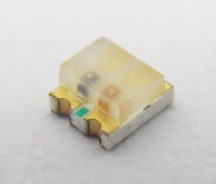
Figure 4: Bivar’s SM0807BC bi-color LED includes a white diffuse LED lens
Diffusion can also be designed into the LED package. Figure X shows Bivar’s SM0807BC that combines two LED die in a single 0807 surface-mount package. Devices such as this are ideal for small scale applications where multiple signals need to be displayed. When needed, a third color can be created by powering up both chips together. The part features a white diffused LED lens for uniform light output and wide viewing angles. RGB color is also available for 0807 and 1204 surface-mount LED chips.
Leave a Reply Cancel reply
You must be logged in to post a comment.
